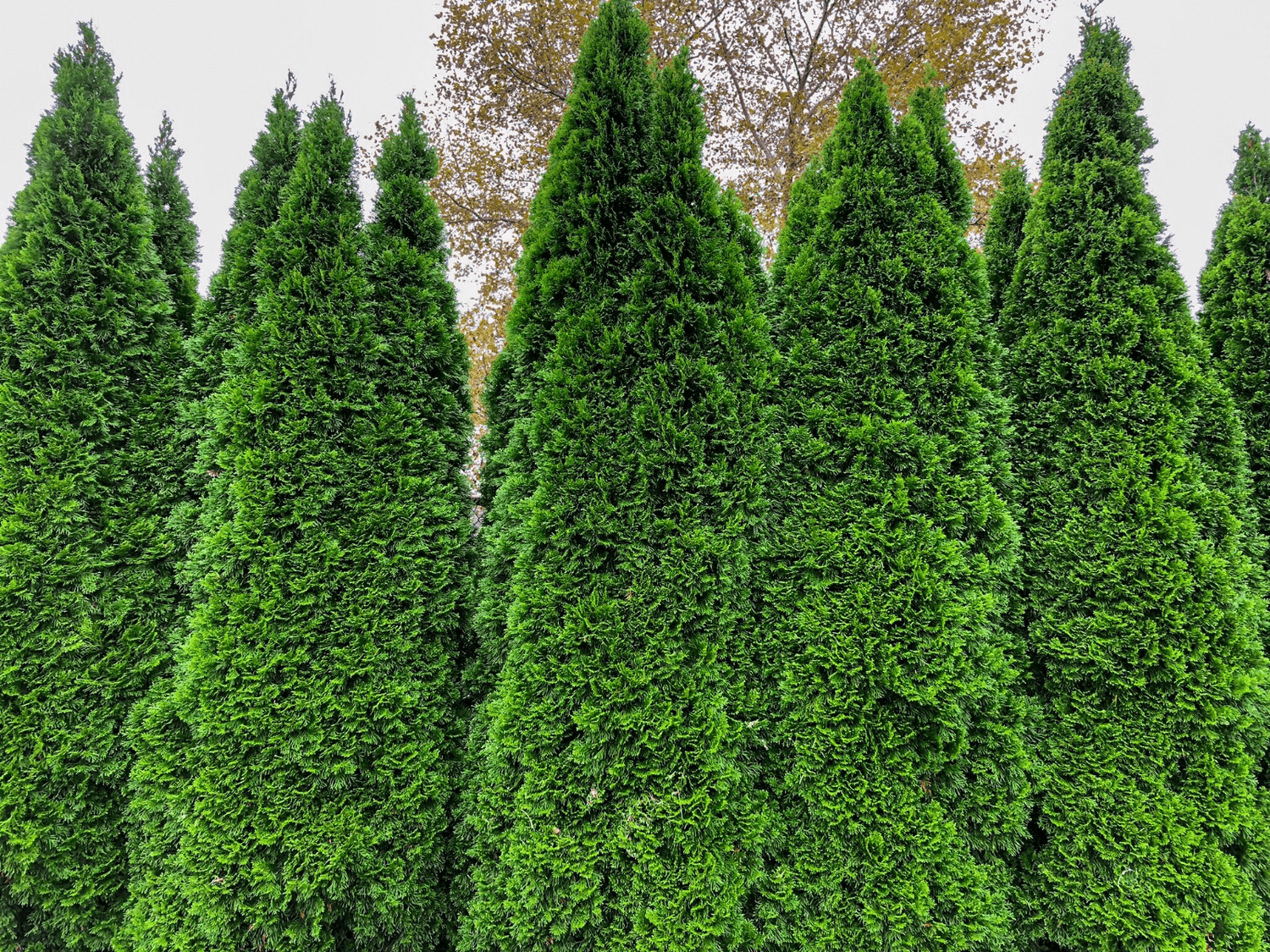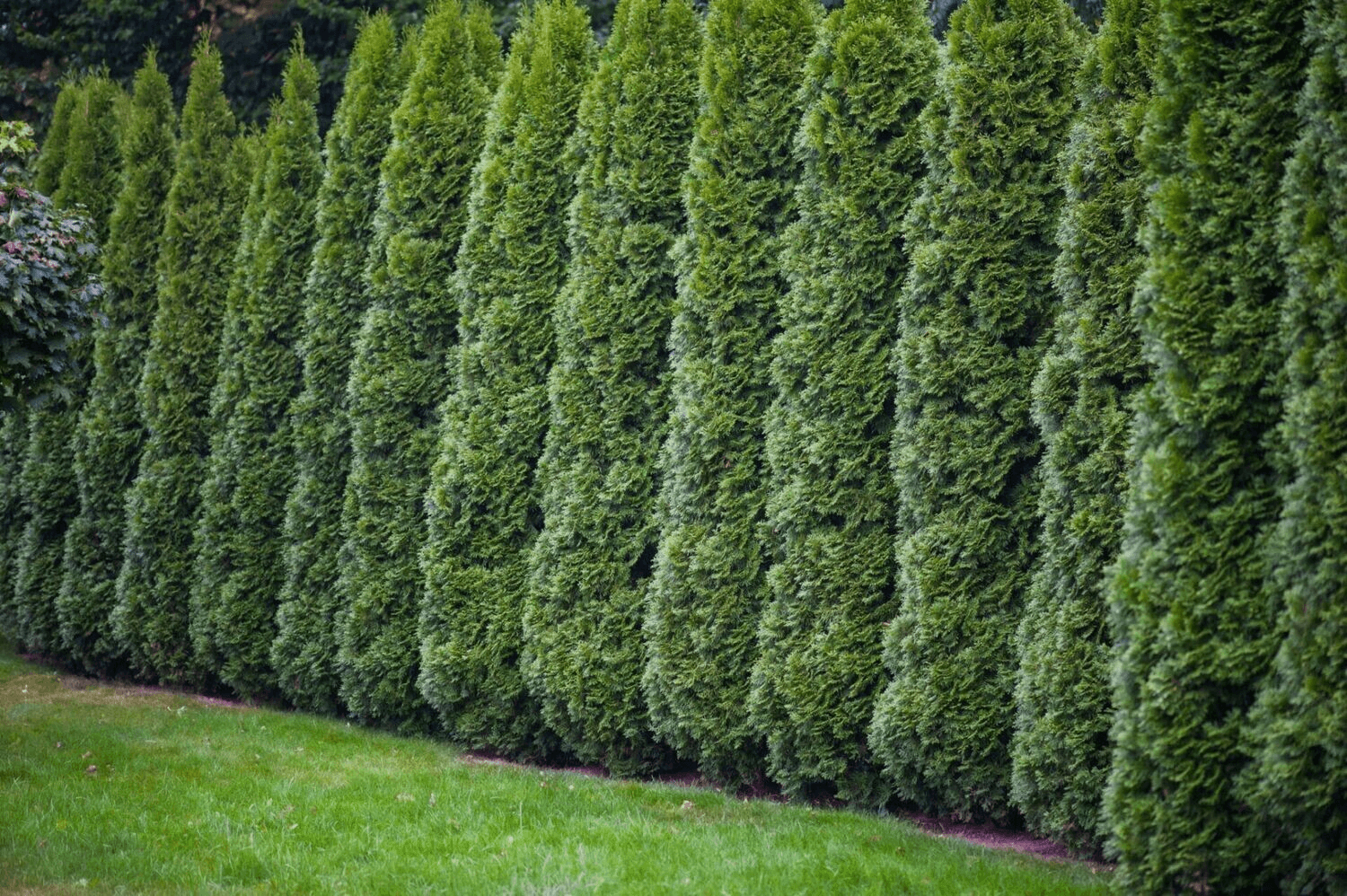Appearance
The Emerald Green or "Smaragd" arborvitae trees are narrow, pyramidal cultivars of the Thuja occidentalis tree. They grow about 10–15 feet in height by 3–4 feet in width. That makes them perfect for foundation planting, providing natural privacy screens in smaller yards and narrower spaces. They will grow up to 1–2 feet per year until fully grown and then grow 6–9 inches. Its dense green, scale-shaped leaves fan out in sprays. This thick foliage makes it ideal as a hedge or natural privacy screen around a garden or yard.









